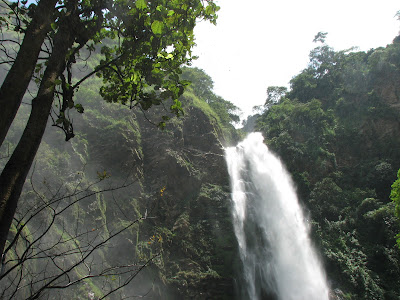We've had two more satisfying days. On Monday we met with a
Presbyterian development organization that took us to a community where
they are working. As usual, we sat under the best village shade tree and most
of the men and women came.
In the afternoon we visited the Yaakoro Youth Development Center,
a local organization helping young women learn worthwhile trade skills.
Yesterday we traveled to Bolgatanga (wouldn't it be great to come
from a town with that name? - almost as good as Ouagadougou, Burkina Faso).
We were hosted by Doris, a fast moving dynamo - wonderful!
We visited a school, a team of women making Shea Butter, a group
of women making Pito (more on that below), and a craft center.
Walking around in the hot midday sun takes its toll. We were very pleased
when God sent us a thunderstorm at the end of the day.
 r r |
| The kids, always orderly and well-behaved!!!! join the meeting as well. |
 |
| When we looked around, we noticed that we had an audience. |
 |
| Off to see the Shea Butter operation. We walked through the rolling fields for about a kilometer. That's sorghum in the background. |
 |
| Here we are again, under a tree. And this is where the shea butter operation unfolded. Notice all the pots and pans in between the legs of the students. They'll all be used. |
 |
| You start by smashing the nuts, which come from a tree about the size of an apple tree. |
 |
| They let us smash some too. A big rock below, the nut on the rock, and a small rock brought down hard on the nut does the job. |
 |
| We drank it both ways. Of course you drink from calabashes. |
 |
| Always some well-behaved kids around. Notice how they found the shade. |
 |
| We had such a nice time at the pito place, talking, drinking, and dancing, that it felt natural to give gifts to each other. We gave them about $20, and they gave us this guinea fowl. |
 |
| And when we got home, a glorious thunderstorm. The students took advantage of it, playing ninja and cooling off at the same time. |




















































